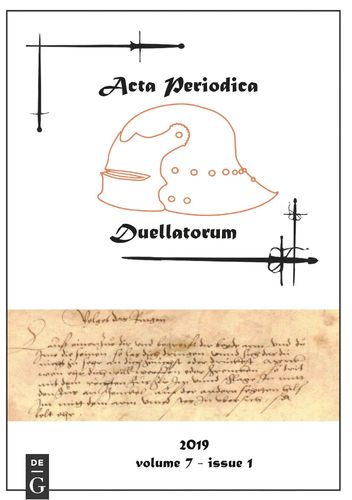Mos geometricus v. Reality
Quantity, Quality, Time and Information in Combat Simulations since the Middle Ages
Keywords:
mos geometricus, duel, fencing, HEMA, Jomini, Clausewitz, war game, tabletop gamingAbstract
The non-lethal simulated training of lethal reality, whether it be single combat or war, was historically a question of life and death. We provide an analytical framework for evaluating historical precedents in fight simulations by focussing on two key questions: What was the philosophy guiding the conception of reality – in particular, did historical practitioners see reality as deterministic, and if not, how did they see it? And how did the simulations deal with the elements of quantity, quality, timing, and information? The analysis shows that our ancestors’ perception of the reality of fighting chan-ged over time, as their interpretations of reality for the world at large changed. Considerable intellectual effort and ingenuity were invested into attempts to understand reality and formulate corresponding realistic simulations, making these ludic artefacts reflective, sometimes iconic for, and occasionally ahead of their historical-cultural context. Seemingly irrational phenomena, such as the persistence of lethal duelling, had perfectly pragmatic elements.Downloads
Download data is not yet available.
Downloads
Published
2019-08-17
Issue
Section
Articles
License
Copyright (c) 2019 Jürg Gassmann, Samuel Gassmann

This work is licensed under a Creative Commons Attribution-NonCommercial-NoDerivatives 4.0 International License.
How to Cite
Gassmann, J., & Gassmann, S. (2019). Mos geometricus v. Reality: Quantity, Quality, Time and Information in Combat Simulations since the Middle Ages. Acta Periodica Duellatorum, 7(1), 173–202. https://bop.unibe.ch/apd/article/view/6873



